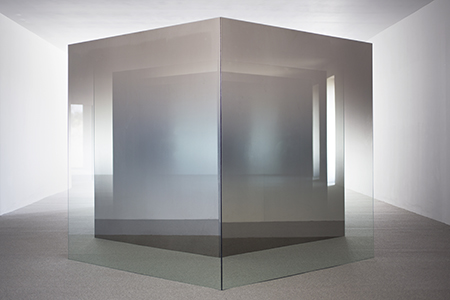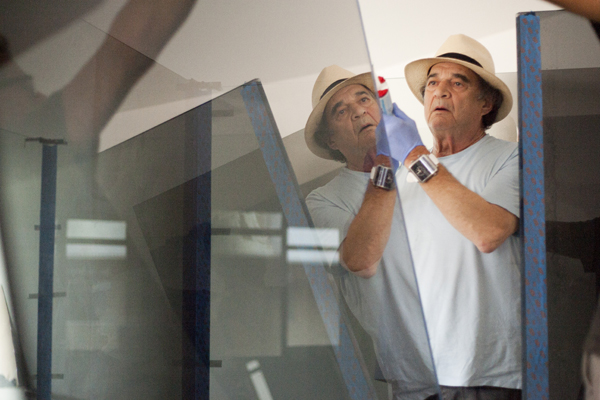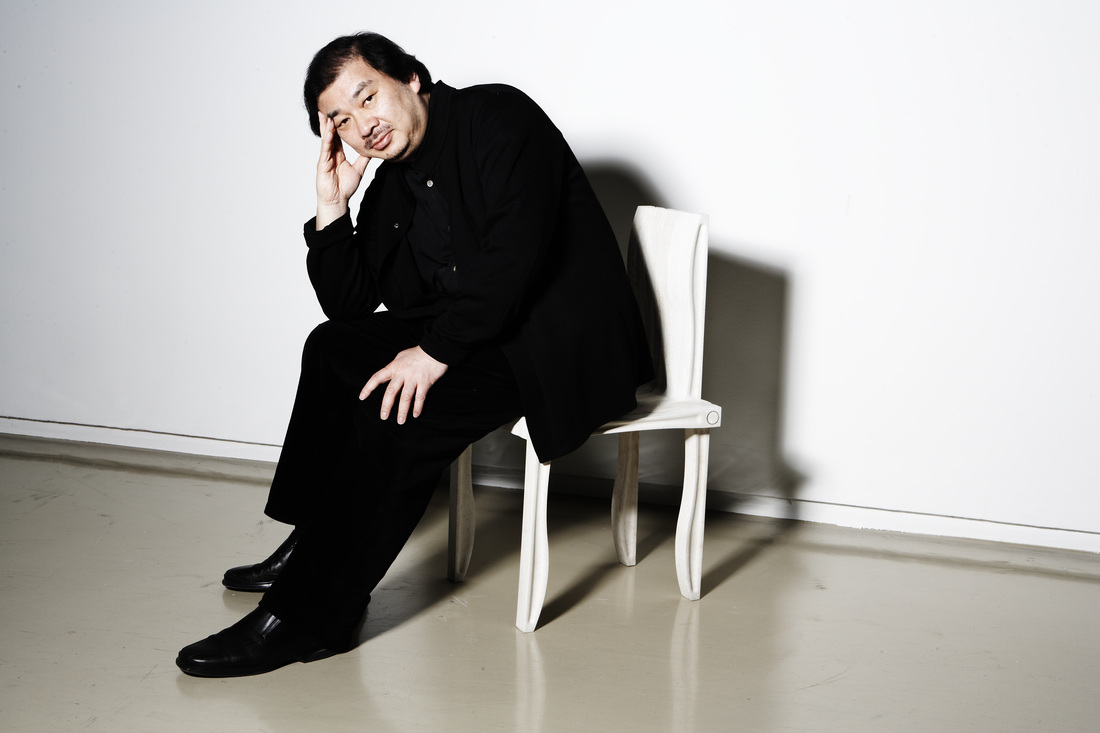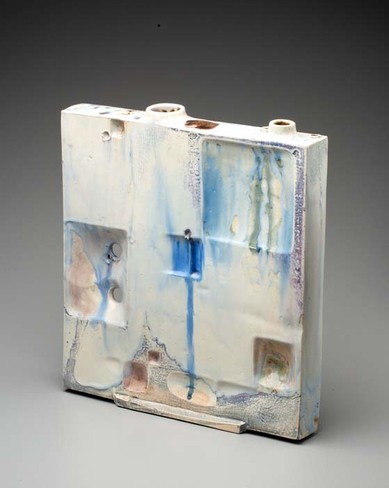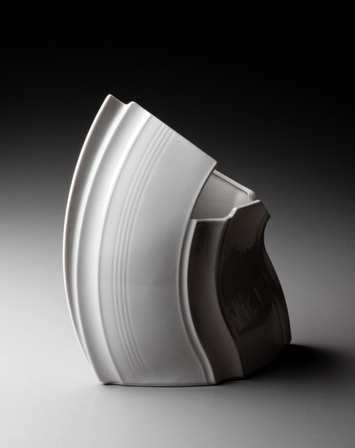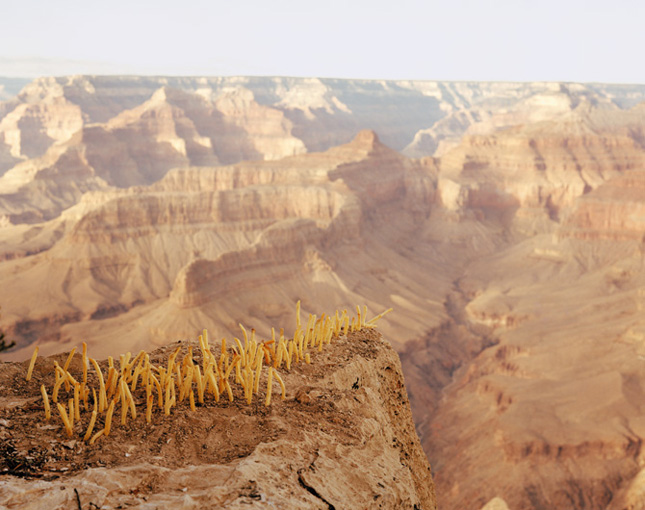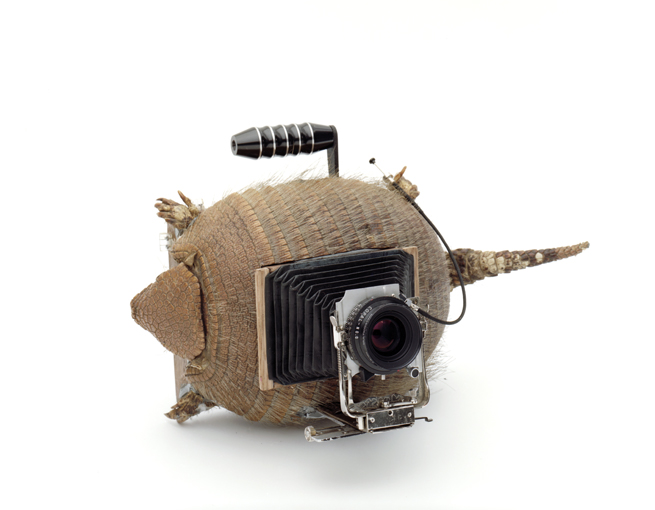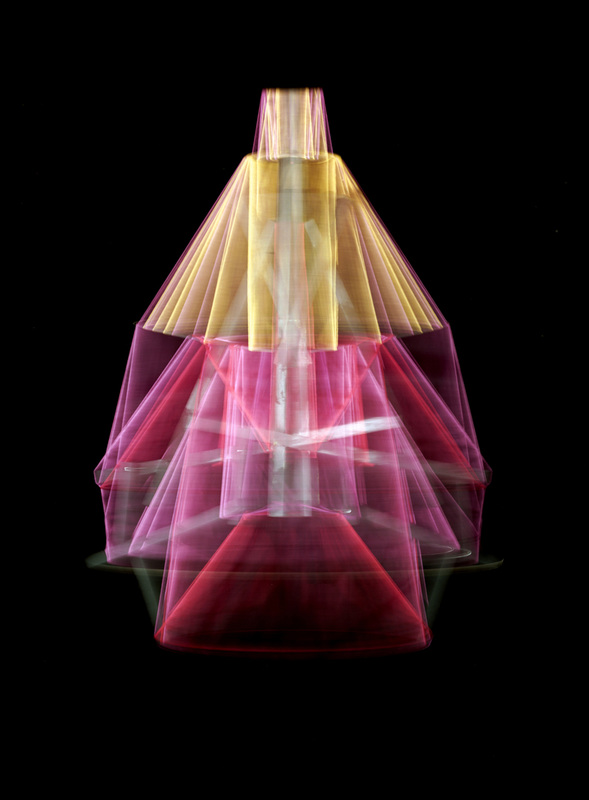| | In October 2014, the Chinati Foundation opened an exhibition of work by artist Larry Bell. The exhibition focuses on Bell’s large freestanding glass sculptures, a type of work that he first showed in 1969 and continued to develop and exhibit until the late nineteen-nineties. Due to their fragility, few have survived. The exhibition in Marfa will be the first in almost two decades to show the Standing Walls, as Bell calls them, in a selection of half a dozen works of different sizes and configurations. The exhibition is curated by Marianne Stockebrand, the Chinati Foundation’s Director Emeritus. The exhibition will remain open to the public through July 2015. For the exhibition Larry Bell assembled 32 same-sized glass panels to form 16 same-shaped standing units. Using both clear and dark gray glass, as well as partially coated panels, the artist placed corners throughout the U-shaped gallery in a sequence of narrower and wider distances while at the same time alternating, or mixing, the different kinds of glass. All 16 units in the exhibition constitute one work. Glass has been of interest to Larry Bell since the early 1960s when he began using it in smaller works, predominantly cubes. Its properties of transmitting, absorbing and reflecting light have been a driving force in creating works ever since. In the late 1960s he made his first large free-standing glass sculptures, or “Standing Walls” as he prefers to call them, consisting of two or more parts that were configured into corners, squares, zig-zag walls, etc. Their sizes can reach a height of eight feet. Mostly conceived for indoor placement, some of his works were specifically made for outdoor sites. read more: https://chinati.org/programs/larry-bell-6-x-6-an-improvisation |
|
0 Comments
In the early 1960s, Václav Šerák began to collaborate with porcelain manufacturers as a designer. He familiarized himself in detail with this field as an apprentice at a plant in Merklín that manufactured high-voltage circuit breakers. Throughout his life, he has been interested in technical aspects of the making of silicate materials, and thanks to his thorough knowledge about them and his experiments with materials and shapes, he has come up with innovations that he has applied working in the studio and in his original designs. He has also applied his original, monumental, and expressive style to works incorporated into architecture since the early 1990s in collaboration with the architect Bohumil Chalupníček, and somewhat nontraditionally in snow and ice sculptures together with Jiří Laštovička and Petr Říha. In 1966, he founded the International Symposium of Ceramics in Bechyně together with Lubor Těhník, Pravoslav Rada, and Bohumil Dobiáš, Jr. It is the longest continually existing symposium on the European continent.
In 1990 Václav Šerák became the leader of the Studio of Ceramics and Porcelain at the Academy of Arts, Architecture and Design in Prague, where he was appointed to a professorship in 1992. In the atmosphere following the revolution, he introduced students to developments in ceramic sculpture and design from the recent past beyond the borders of Czechoslovakia. Šerák’s pupils now have great influence over Czech design, and it is no coincidence that the academy and university studios in Bohemia and Slovakia working with ceramics are lead by Daniel Piršč, Antonín Tomášek, Gabrilel Vach a Maxim Velčovský. http://www.upm.cz/index.php?language=en&page=123&year=2014&id=240&img=1556 http://en.artceramics.cz/members/serak-vaclav
|
